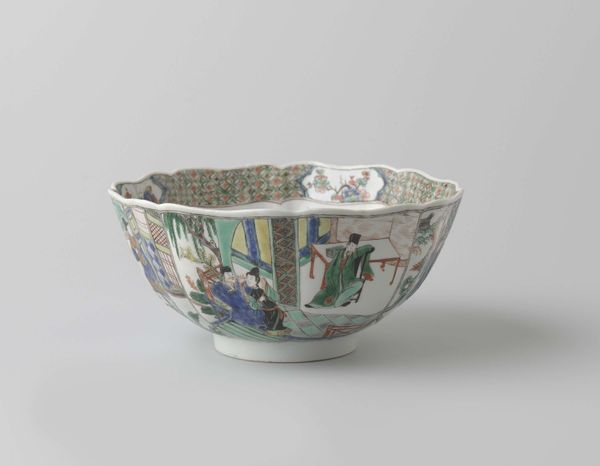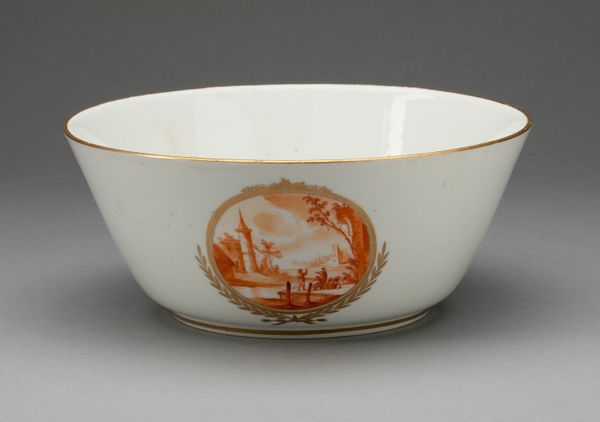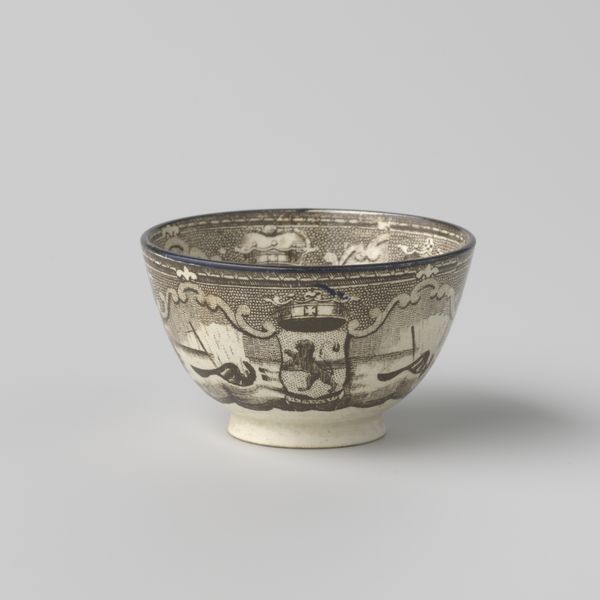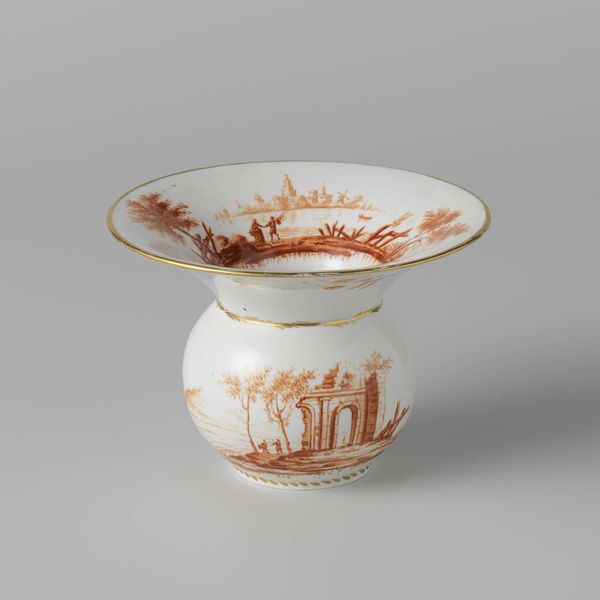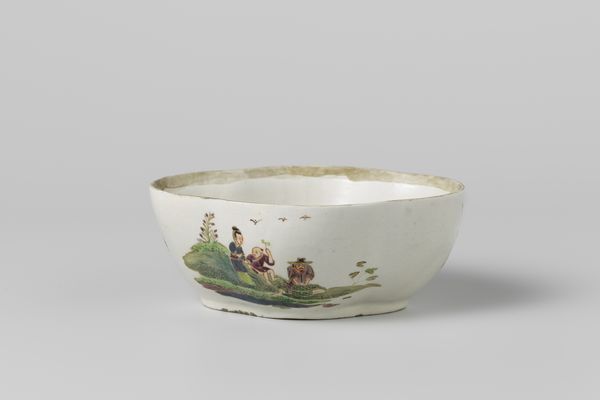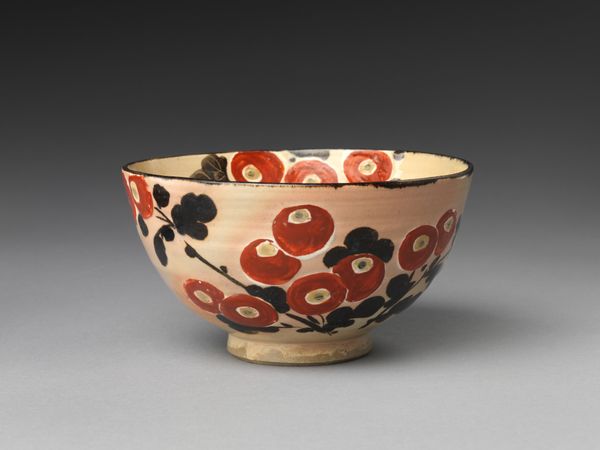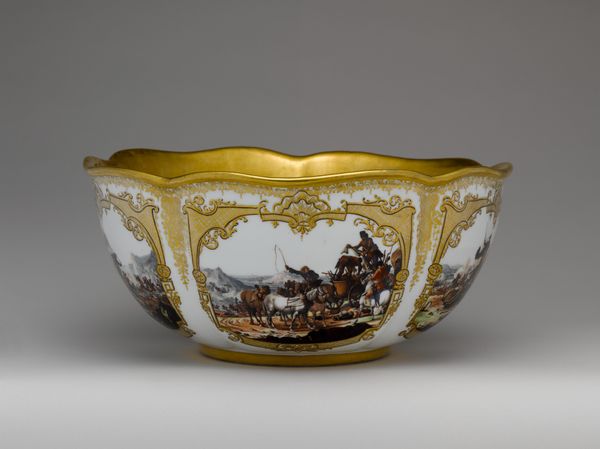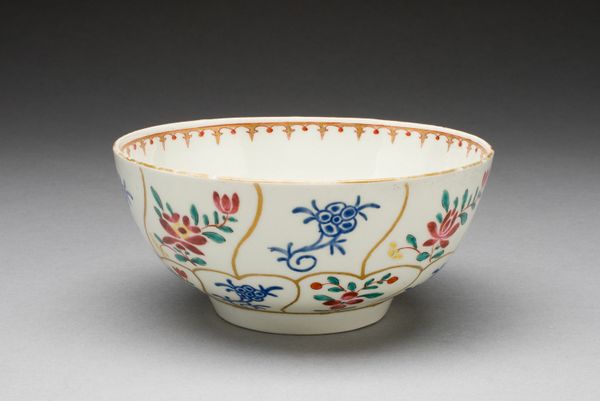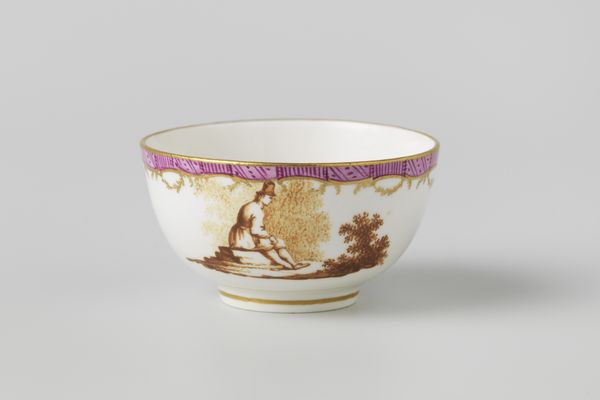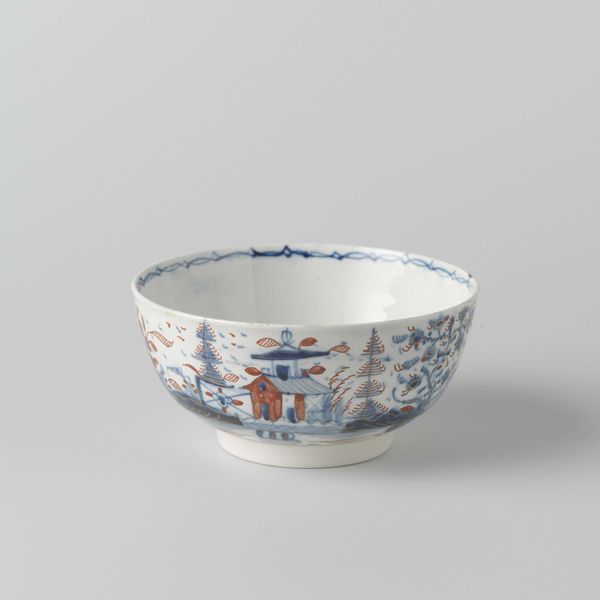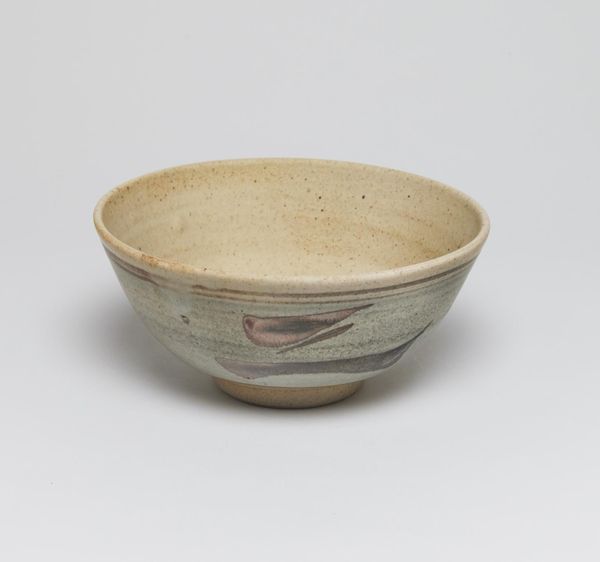
ceramic, porcelain
#
landscape
#
ceramic
#
porcelain
#
genre-painting
#
decorative-art
Dimensions: 3 1/8 × 7 3/4 in. (7.9 × 19.7 cm)
Copyright: Public Domain
Curator: Here we have a slop bowl, made of porcelain between 1730 and 1740. Its creation reflects a time of ornate detail in functional ware. Editor: The grisaille decoration and stark contrast of the monochrome palette are arresting! It has a distinct feel—formal, perhaps, and yet the bowl itself suggests domesticity. Curator: Indeed, the decorative style references detailed landscapes and hints at genre paintings. Note the precise rendering; the craftsmanship speaks to a deep understanding of material properties. How the glaze interacts with the light! Editor: This level of detail on what is, after all, an everyday object, does raise questions about access. Who had the leisure, the privilege, to invest in something like this? Was the landscape depicted idealized to conceal the social realities of the time? Curator: Consider also how the shape of the bowl itself acts as a framing device. The curve dictates the viewer's experience, segmenting the landscape. And observe how negative space—the untouched porcelain—creates depth. Editor: Looking closer, it strikes me how serene the landscape appears—almost detached from the human element. Was it intended to evoke nostalgia or a kind of utopia, sharply contrasting with the social inequities of the period? I wonder about the specific narrative implied here. Is it a statement of power? Or is it merely an aspiration to a life free from the burden of manual labour? Curator: To disregard such aesthetic choices, and to reduce it all to merely politics seems almost reductive. Editor: But shouldn’t art history push us to see beyond pure formalism and challenge us to re-examine narratives? Curator: Perhaps in the meeting of forms and interpretation lies a greater appreciation for our place in an art history shaped as much by economics as innovation. Editor: Absolutely. Seeing the landscape as a representation of a social order—not merely as an aesthetic choice—provides context, not constraint. It challenges our notions of art as a purely visual experience.
Comments
No comments
Be the first to comment and join the conversation on the ultimate creative platform.
